We don’t have the opportunity to often use the word “windfall” in modern society as it was originally coined: A benefit caused by the wind literally knocking something down. Roman armies gathered wind-felled wood for their camp fires. A couple of weeks ago this newsletter reported a windfall of grapes locally. They were on the top of a tree downed by wind onto a bike trail. And now much of the eastern south has experienced high winds from Hurricane Matthew and there is a lot of fall.
From a foraging point of view downed oaks don’t provide much. Only the ones that were masting are of interest and they were already dropping acorns. But there are a couple of tree species worth investigating if they are blown over. One is pines. It’s an opportunity to harvest cambium and or nearly ripe cones for their seeds. It’s fairly easy to strip “fillets” off downed limbs or young trunks. And one does not have to climb the tree for the cones. A second tree worth investigating is the Chinese Elm. It’s used in landscaping intensely. During the Great Depression of the 1930’s they were planted by the millions and perhaps are the most intentionally planted tree outside of the lumber industry. Many mall parking lots within the reach of Matthew have had their medium-sized Chinese Elms blown over. This brings not only young leaves and samaras within reach but also provides easy access to the tree’s cambium which is edible.
Every tree’s cambium grows differently and is the “living”part of the tree. It grows in two directions at once, in and out. The inner cambium become the wood of the tree. The outer cambium becomes the bark of the tree. This gives each tree it’s distinction wood and bark. And on the Chinese Elm (all Ulmus actually) and the pine (all Pinus) the cambium is edible.
A reminder that this weekend, Saturday, is the Plant SwapFest 2016 in Arcadia FL., 2460 SW Mixon Street. For more information you can go to the page on face book or contact Andy Firk. Also this Saturday in Orlando I am holding a class for the Outdoors and Active Club. If you are a member of O&A contact them for details.
Upcoming Foraging Classes:
Sunday, October 16th, Florida State College, south campus, 11901 Beach Blvd., Jacksonville, 32246. 9 a.m.
Sunday, October 23rd, Dreher Park, 1200 Southern Blvd., West Palm Beach, 33405. 9 a.m.
To learn more about the classes go here.
“Don’t forage within 100 feet of a road.” That phrase bothers me. The old time newsman Harry Reasoner said he hated labels because the moment you use a label you don’t have think about what you labeled. It’s the same with that phrase: Don’t forage within 100 feet of a road. You stop thinking. Deciding whether land and water is wholesome enough to forage from requires thought, not sayings.
The three things that concern me with land are which way does the water flow, which way do the predominant winds blow, and what was here before now? Water and wind can carry pollutants regardless of how you choose to define them. If I am uphill 20 feet from a dirt country road– and up wind — I’m really not too concerned about contamination. Most of the problems — like dust — will wash off. If I am downhill and downwind from an interstate a 1,000 feet a way could easily still be contaminated. If one is downwind interstate dust can be blown for miles. The point is it takes more than sayings to help you access land for foraging.
“Previous use” is a concern not often mentioned. Whenever I see a nice happy show on inner city folks growing food on vacant lots I want to know what was on that lot before it was vacant? A greasy garage? A gas station. A lawn-care business? It can make a difference. One location where I teach a foraging class an edible yam grows. And often we will dig one up just to see what it looks like. But, no one is allowed to eat it. Why? Because your hands get exceptionally dirty digging in that particular location. It once was a building that burned down scores of years ago. The soil is full of soot, and who know what other chemicals from days past. The yams growing there might not be safe to eat. They can be used starters but not for food themselves. This is also true of railroad tracks which are some of the most heavily chemicalized property anywhere. Railroads have been killing plants and protecting wooden ties for more than a century. It’s polluted land. Leave it alone.
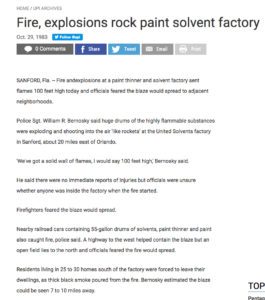 In Altamonte Springs, Florida, there is a large hotel of a name most would recognize. It is adjacent to Interstate 4. And for a couple of years it had a garden against the right of way fence with a sign that said CHEF’S HERB GARDEN. I appreciate the idea but I did not eat there. In Sanford, Florida, some commercial truck farm acreage was shut down because it was close to and contaminated by a paint factory fire that also ignited railroad car carrying solvents, paint and paint thinner. That did not stop a private person from growing food on the same property and selling it beside the road as fresh and wholesome.
In Altamonte Springs, Florida, there is a large hotel of a name most would recognize. It is adjacent to Interstate 4. And for a couple of years it had a garden against the right of way fence with a sign that said CHEF’S HERB GARDEN. I appreciate the idea but I did not eat there. In Sanford, Florida, some commercial truck farm acreage was shut down because it was close to and contaminated by a paint factory fire that also ignited railroad car carrying solvents, paint and paint thinner. That did not stop a private person from growing food on the same property and selling it beside the road as fresh and wholesome.
Water is more tricky as there can be pollutants up stream. Some things are obvious: A pond or small lake at the base of a hill covered with parking lots is not a good place to harvest edibles. The run-off will be contaminated. Often you can see oil on water. One also has to assume bacterial contamination at least. Some species, like Water Hyacinths, are known to pick up pollutants. One area that I am not too concerned is treated water used for irrigation inside cities. If the plant container — a big pot or a bed — is above the road drainage level I might forage from there. Most external pollutants can be washed off. And if the soil is above the drainage level — as in a raised bed — the pollution can be low.
Forget slogans. What you essentially want to look for is water and wind flow, and drainage level. Presume bacteria as well.
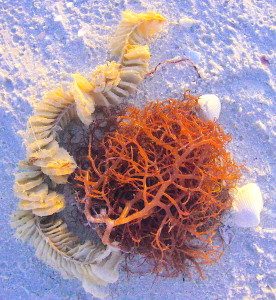
Do you know this edible? You would if you read the Green Deane Forum.
Want to identify a plant? Looking for a foraging reference? Do you have a UFO, an Unidentified Flowering Object you want identified? On the Green Deane Forum we chat about foraging all year. And it’s not just about warm-weather plants or just North American flora. Many nations share common weeds so there’s a lot to talk about. There’s also more than weeds. The reference section has information for foraging around the world. There are also articles on food preservation, and forgotten skills from making bows to fermenting food. You can join the forum by clicking on the button on the upper right hand side of this page.
All of Green Deane’s videos are available for free on You Tube. They do have ads on them so every time you watch a Green Deane video I get a quarter of one cent. Four views, one cent. Not exactly a large money-maker but it helps pays for the newsletter. If you want to see the videos without ads and some in slightly better quality you can order the DVD set. It is nine DVDs with 15 videos on each. Many people want their own copy of the videos or they have a slow service and its easier to order then to watch them on-line. They make a good gift for that forager you know. Individual DVDs can also be ordered. You can order them by clicking on the button on the top right of this page or you can go here.
By the way: While plants can have favored seasons for fruit they have to follow the usual. Today, for example, I saw a Queen Palm fruiting west of Daytona Beach. That usually happens in the late spring or early summer. And in downtown Winter Park there are four Podocarpus trees that fruit in December when the usual time is around August. Even mushrooms can get into the act: I usually see Ringless Honey Mushrooms in the first two weeks of November. But I have also found them in July in south Florida. Plants don’t always do what you expect them to do.
This is Newsletter 228.
If you would like to donate to Eat The Weeds please click here.


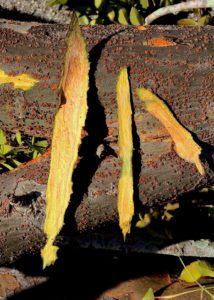
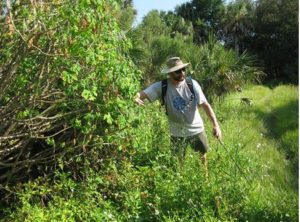
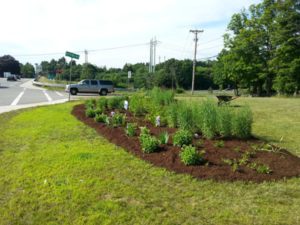
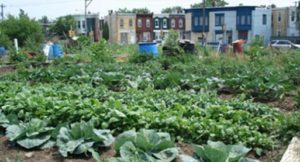
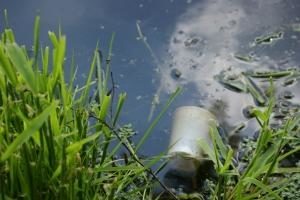
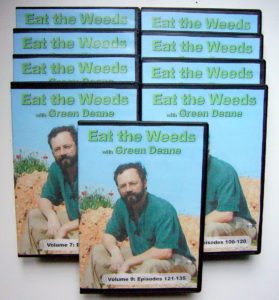
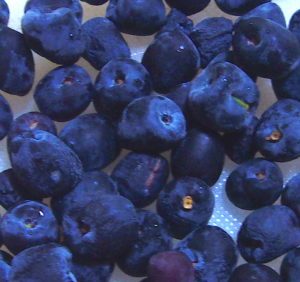

Please take a look at my email response on last week’s newsletter. I gave directions to a wonderful area just north of Panama City for you to check out.
It is true what you say about finding out what was there before now. As I have said before, I grew up in pre-Disney central Florida and I remember all the dumps, now called landfills, all around. They were not regulated back then 50-60 years ago and it is unbelievable what we would see being dumped in them. Many of these areas are now covered with dirt and houses and shopping centers built over them. A couple around west Orlando are Hiawassee Road just east of hwy 50; Pine Hills Road north of Clarcona Road; and several others. Beware!
Hi, Deanne-
Been hoping to see a Seminole County location pop up in the foraging classes but haven’t seen any yet. Do you have any planned in the future? Is there a time of year that is best to forage in this area?
Thanks- really enjoy your columns.
I actually do have a class in Seminole County on the Wekiva Bike Trail. However, the foraging classes in Blanchard Park in Orlando contain the same plants.
Now almost three years have passed since I’ve been with Yusuf, my grandson, both sitting on the pavement of one of one of the streets of Southampton (UK} under the shade of a grand oak tree collecting acorns.Yousuf is now with his father in Dawha – Quatar – playing with his younger sister = beautiful Talia. For sure she is learning a bit of foraging from him (some of that gained from Southa
mpton. On my part I’m trying to make a rosary like prayer beads sometimes made of wood, Aegean olive tree, tourmaline, sandalwood ,pearl,”Laloab” – vernacular for Balanites or even gemstone .It usually consisists of 3x33beads – in my case acorns. After heating a wire to red hot, the 99 acorns will be pierced then threaded to form the rosary. The purpose is determine and indicate the correct number reached during worship or praying – the count. In short the praying person utters the following during worship”Praises to be Allah” 33 times, “Glory be to Allah” 33 times & “Allah is Greatest” 33times and better to finish with “ There is no god except Allah He is One without any partner.